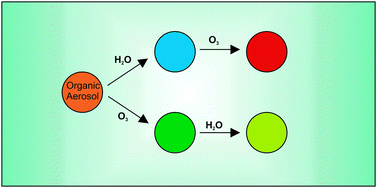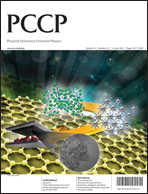Atmospheric aerosol particles are important in many atmospheric processes such as: light scattering, light absorption, and cloud formation. Oxidation reactions continuously change the chemical composition of aerosol particles, especially the organic mass component, which is often the dominant fraction. These ageing processes are poorly understood but are known to significantly affect the cloud formation potential of aerosol particles. In this study we investigate the effect of humidity and ozone on the chemical composition of two model organic aerosol systems: oleic acid and arachidonic acid. These two acids are also compared to maleic acid an aerosol system we have previously studied using the same techniques. The role of relative humidity in the oxidation scheme of the three carboxylic acids is very compound specific. Relative humidity was observed to have a major influence on the oxidation scheme of maleic acid and arachidonic acid, whereas no dependence was observed for the oxidation of oleic acid. In both, maleic acid and arachidonic acid, an evaporation of volatile oxidation products could only be observed when the particle was exposed to high relative humidities. The particle phase has a strong effect on the particle processing and the effect of water on the oxidation processes. Oleic acid is liquid under all conditions at room temperature (dry or elevated humidity, pure or oxidized particle). Thus ozone can easily diffuse into the bulk of the particle irrespective of the oxidation conditions. In addition, water does not influence the oxidation reactions of oleic acid particles, which is partly explained by the structure of oxidation intermediates. The low water solubility of oleic acid and its ozonolysis products limits the effect of water. This is very different for maleic and arachidonic acid, which change their phase from liquid to solid upon oxidation or upon changes in humidity. In a solid particle the reactions of ozone and water with the organic particle are restricted to the particle surface and hence different regimes of reactivity are dictated by particle phase. The potential relevance of these three model systems to mimic ambient atmospheric processes is discussed.

You have access to this article
 Please wait while we load your content...
Something went wrong. Try again?
Please wait while we load your content...
Something went wrong. Try again?


 Please wait while we load your content...
Please wait while we load your content...